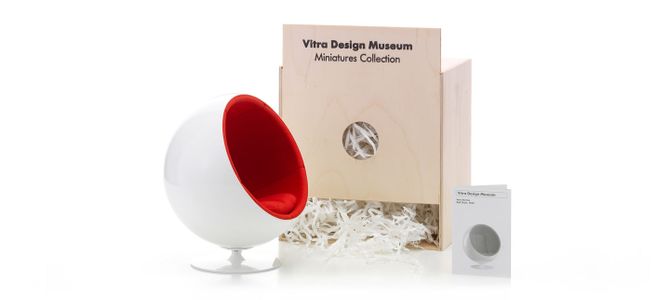
Miniatures Collection - Ball Chair
Eero Aarnio, 1965
The idea of this kind of mobile capsule allowing people to sit where they want within the house also anticipates the kind of living concepts discussed in the 1970s for a young, liberal society. On the outside, this gleaming, polished sphere seems cold and futuristic, but its inside reveals a space where users can feel cozy and protected. From the inside outside noise is considerably muffled, allowing users to relax in any number of positions, for example, to sit cross-legged. Mounted on a round metal base just above ground level, the sphere can be completely rotated on its own axis, so that users can vary their view from the »cave«. Ball Chair thus represents a special category of household objects. It is something between a piece of furniture and a piece of architecture and at the same time embodies both the mobile and the established, the fixed.
Informations
| Titre | Langue | File | |
|---|---|---|---|
| Fiche Produit | DE | PDF, 769 kB | Télécharger |
Miniatures Collection
Depuis plus de 20 ans, le Vitra Design Museum reproduit en miniature les jalons de l'histoire du design de mobilier de sa propre collection. La Miniatures Collection englobe toute l'histoire du mobilier industriel – de l'historicisme et de l'Art Nouveau au Bauhaus et à la Nouvelle Objectivité, du Radical Design et du Postmodernisme à nos jours. Les chaises sont reproduites à l'échelle un sixième et reproduisent fidèlement l'original historique jusqu'au moindre détail de conception, de matériau et de nuance de couleur. Cette précision des détails s'applique aussi aux nervures du bois, à la reproduction des vis ou aux méthodes minutieuses de la fabrication artisanale. Ces miniatures sont non seulement de précieux objets de collection, mais également un support pédagogique pour les universités, les écoles de design et les architectes.